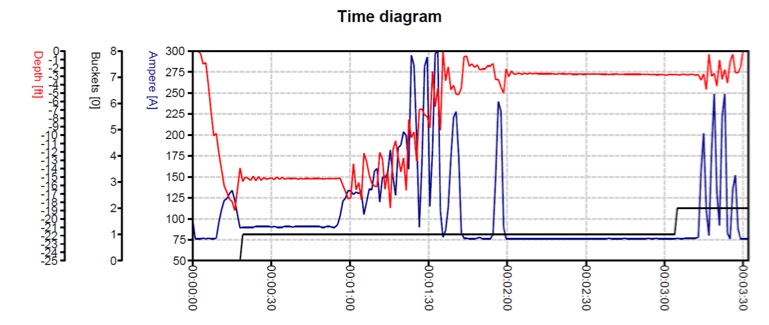AMPier
What is an AMPier?
AMPiers (Amperage Modulated Piers) are aggregate piers installed according to a proprietary quality control system.
By measuring compactive effort, an AMPier ensures that every layer of soil is improved. The AMPier system allows Wurster Betterground to build “variable diameter columns” which decrease total and differential settlements, provide increased stability, and optimized aggregate consumption, often leading to savings for our customers.

Throughout the installation of every AMPier, a digital quality control record is generated. This quality control log allows clients and their 3rd party engineers to verify the compactive effort, depth, and diameter of every aggregate pier installed by Wurster Betterground.
AMPier Methods
Dry Topfeed AMPiers:
Dry top-feed is most suited for soils in which a predrilled borehole remains open. By predrilling instead of penetrating with the vibroflot alone, installation speed can be increased while potentially eliminating the need for compressed air. Therefore, when this method is feasible, it can provide not only schedule and budget savings, but also CO2 emissions reductions through the elimination of the compressors and water pumps needed for other methods.
Wet Topfeed AMPiers:
Wet top-feed is most suited for sands and other granular soils in which other methods may struggle to penetrate the vibroflot and predrilling is not permitted or ideal. By jetting water, the vibroflot is able to penetrate the soils to the necessary treatment depth. This method requires the expertise necessary to control the flow of water at the surface of a jobsite and a jobsite of sufficient size to allow for this control.
Bottomfeed AMPiers:
Bottomfeed methods are utilized when soils do not allow open hole drilling, nor the use of water for penetration. By feeding the stone through a tremie pipe that runs alongside the vibroflot, the stone is introduced at the bottom of the hole first, for which the method is named. Bottomfeed also guarantees that stone is being placed in a highly controlled manner which is necessary for many marginal soil conditions.

